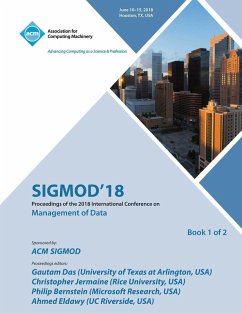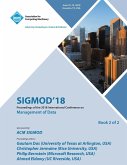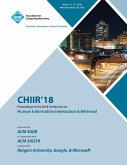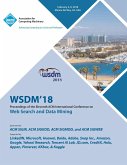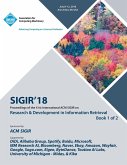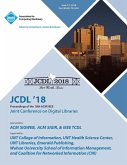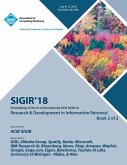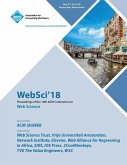It is our pleasure to share with you the proceedings of SIGMOD 2018, the 44th ACM SIGMOD International Conference on Management of Data, in Houston, Texas. For many people, the words 'Houston, Texas' conjure up images of cowboy hats and oil rigs. This is not without reason. More than 20 Fortune 500 oil and gas companies are headquartered in Houston, and Texas beef is legendary. But less appreciated is that Houston is a vibrant and diverse city. By the usual metrics it is the most racially and ethnically diverse city in the United States. That diversity helps to make Houston a foodie's paradise, with wonderful Mexican, Tex-Mex, Vietnamese, and Chinese restaurants, and great Southern options, such as soul food and Cajun. Not to mention the best Texas-style barbecue! The SIGMOD conference is being held at the Marriott Marquis Houston, overlooking downtown Houston's Discovery Green park. Adjacent to Discovery Green are Minute Maid Park and the Toyota Center, home of baseball's Houston Astros and basketball's Houston Rockets, respectively. The conference banquet is at Minute Maid Park. Downtown Houston is a short car or train ride from great Houston museum district attractions such as the Menil Collection and the world-class shopping of the Houston Galleria area. And to repeat, everywhere you go in Houston, you'll find great food! This year's technical program features 90 research papers selected from 461 submissions, 15 industrial papers selected from 40 submissions, two invited industrial papers, 35 demonstration papers selected from 108 submissions, and 5 tutorials selected from 14 submissions (two of which were merged into a 2-session tutorial). There are 15 research sessions, 4 industry sessions, an invited special session, and two demonstration sessions. The two invited keynotes were chosen to broaden the SIGMOD community's understanding of areas having a major effect on data management: Eric Brewer, VP of Infrastructure at Google and faculty member at UC Berkeley, talking about the effect of container technology on cloud computing; and Pedro Domingos, Professor at University of Washington, talking about machine learning-what works, what doesn't, and where the field is headed. Like last year, the keynotes are followed by a plenary session of teaser talks, where each presenter gives a one-minute summary of their paper, to give attendees a high-level view of the conference and help them decide which sessions to attend. There are two changes in the session organization from recent years, whose goal is to make the program more compact and interesting for attendees. First, tutorials are presented during the main conference on Tuesday through Thursday, rather than on Friday after the main conference is over. Second, to ensure there are at most four parallel sessions in each time slot, each research paper presentation is allocated either 20 minutes or 10 minutes. The decision of long vs. short presentations had several phases. During the reviewing process, PC members were asked to recommend whether each paper, if accepted, should be a long or short presentation. Then research PC group leaders made a recommendation for each of the accepted papers they supervised -- definitely 20 minutes, 20 minutes if there's time available, borderline, or definitely 10 minutes -- based on reviews, reviewer discussions, and their own judgment, without knowing the identity of authors. Their recommendation is not necessarily a quality metric. They recommended 'definitely 10' for some papers highly-rated by reviewers, because the topic was narrow, could be explained in 10 minutes, or couldn't be explained in 20 minutes so extra time wouldn't help. For borderline papers, the final decision was based on many factors,
Hinweis: Dieser Artikel kann nur an eine deutsche Lieferadresse ausgeliefert werden.
Hinweis: Dieser Artikel kann nur an eine deutsche Lieferadresse ausgeliefert werden.

